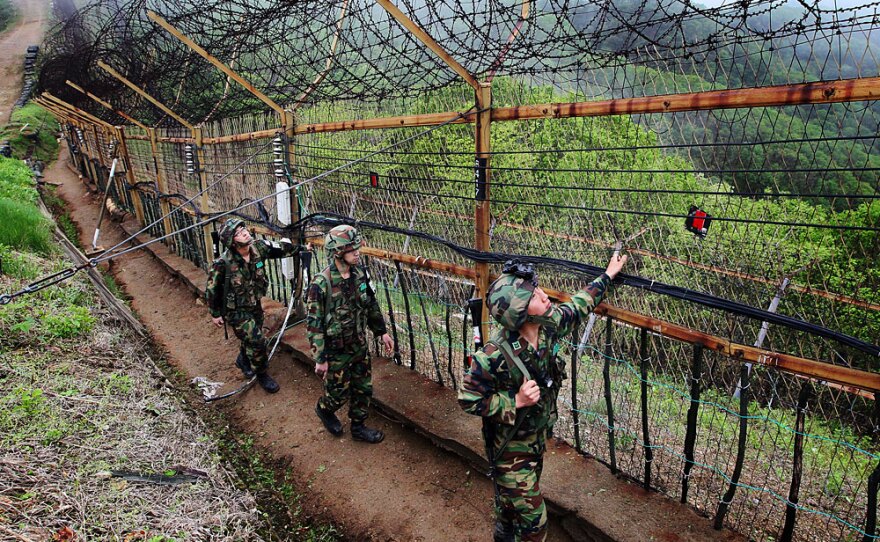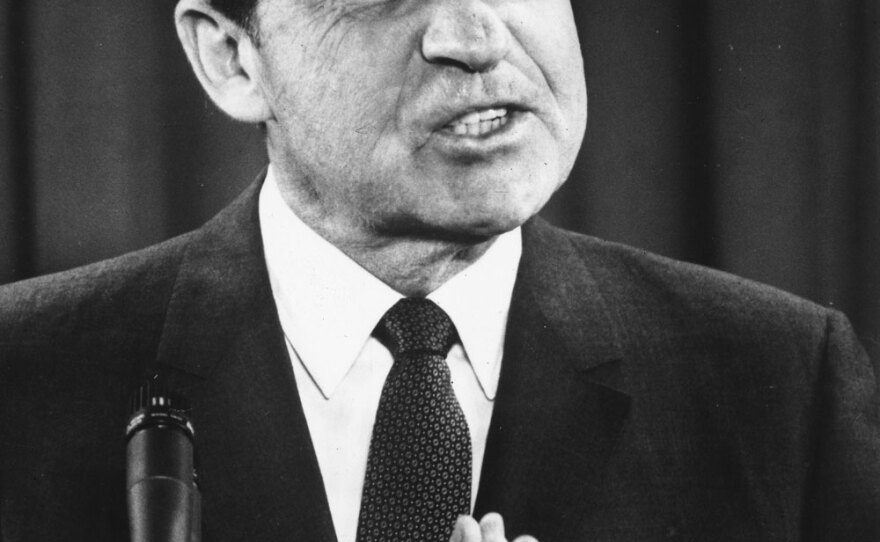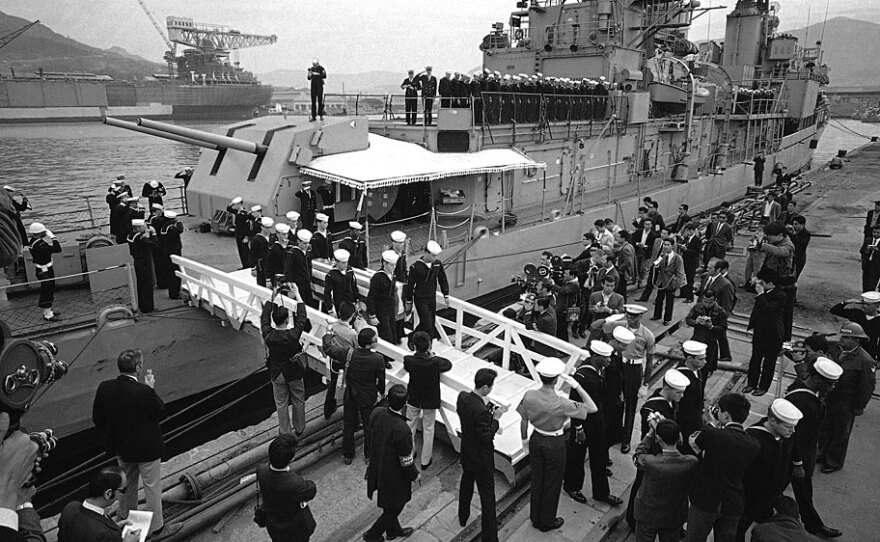Since March, South Korea and the United States have pondered how to respond to North Korea after the torpedo sinking of a South Korean naval ship that left 46 sailors dead.
It was the case, too, in 1969 after North Korean fighter jets shot down an American spy plane. Then, President Nixon and his national security adviser, Henry Kissinger, considered a range of military responses, up to the possible use of nuclear weapons, according to newly disclosed documents.
On April 15, 1969, an American EC-121 reconnaissance plane carrying a full crew took off from a base in Japan and did what it had done dozens of times before -- it flew over international waters gathering signals, radio communications and other intelligence.

This time, though, fighter jets from North Korea intercepted the American plane and shot it down, killing all 31 Americans on board.
'Prepare To Strike'
But a former U.S. fighter pilot has come forward with a story about a nuclear alert just hours after the attack.
Bruce Charles was on temporary duty that day at Kunsan Air Base in South Korea. He was on standard alert as part of the Single Integrated Operational Plan, or SIOP -- the plan for nuclear war with the Soviet Union. His assigned target was an airstrip in North Korea.
Early that afternoon, his commanding officer called him into his office, Charles says.
"When I got to see the colonel, it was very simple. He described the shooting down of the EC-121 about a hundred miles at sea. And that he had a message, which he showed me at that time, saying to prepare to strike my target," Charles says.
The military produced the options, ratcheting up the level of military force all the way to all-out war and to using nuclear weapons.
Charles then rechecked his F-4 fighter jet and the weapon it was carrying. He says it was a B61 nuclear bomb, with a yield of about 330 kilotons -- not the biggest bomb in the U.S. nuclear arsenal, but more than 20 times the size of the bomb dropped over Hiroshima.
Then there were several hours of waiting, Charles says, and the order came to stand down.
"The order to stand down was just about dusk, and it was not a certainty. The colonel said, 'It looks like from the messages I'm getting, we will not do this today. I do not know about tomorrow,' " Charles recalls.
Charles' story could not be independently confirmed, but not long after the North Korean attack, The New York Times, citing sources in the Nixon administration, reported that there was discussion of a nuclear attack against North Korea.
Limited 'Menu Of Options'
In the immediate hours after the attack and for the next few months, Nixon and his advisers struggled to come up with a response, according to Robert Wampler, a historian who works for the National Security Archive, a project of George Washington University.
"The U.S. did not have a very good menu of options when this happened, which sort of constrained them in their ability to pick and choose amongst something that would work, and also contain the situation," Wampler says.

Wampler recently posted 16 documents on the website of the National Security Archive, among some 1,700 that he has been studying. They illustrate vividly just how difficult it was for Nixon to respond to the North Korean attack in such a way that would not spark a wider war.
Two months after the attack, the option of using nuclear weapons was presented to the president, the documents show.
"The military produced the options, ratcheting up the level of military force all the way to all-out war and to using nuclear weapons. But constantly you find the military saying, 'But the risks probably still outweigh the potential gains,' " Wampler says.
The documents do not address what Nixon and Kissinger considered doing in the immediate hours after the attack. By the time the nuclear option arose, Nixon was considering what his choices might be in the next provocation from North Korea.
Morton Halperin worked at that time in the National Security Council. He believes Nixon did decide to retaliate against North Korea.
But Halperin says he has no knowledge that a nuclear strike was considered.
"Nixon had made a decision that we would retaliate by bombing the air base from which we believed the planes had come to shoot down the EC-121. And he had ordered an aircraft carrier to move close enough to be able to carry out the bombing," Halperin says.
Two days after the attack, though, Nixon held a press conference. And what he said led many in Congress to conclude he was not opting for retaliation. He was praised widely for this restraint, Halperin recalls, and then decided against a military response.
The documents posted by the National Security Archive suggest that for half a century, American presidents have had the same problem with North Korea, says Dan Sneider of the Asia-Pacific Research Center at Stanford University.
"The danger of a wide war tends to trump whatever benefit you think might come from punishing your enemy here with a retaliatory strike," Sneider says.
That's precisely the dilemma the Obama administration has been struggling with since March, when the South Korean ship Cheonan was sunk with a single torpedo. North Korea rejected the international findings that it was responsible for sinking the vessel.
Copyright 2022 NPR. To see more, visit https://www.npr.org. 9(MDAzMjM2NDYzMDEyMzc1Njk5NjAxNzY3OQ001))







